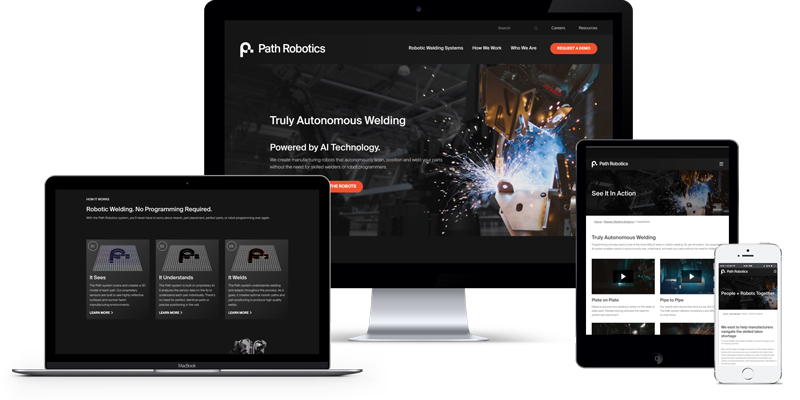How to Pick the Right Internet Site Style for Your Service
Choosing a suitable site design for your business is a complex process that calls for cautious consideration of different aspects. Prioritizing user experience and responsive style can enhance access and fulfillment.
Define Your Company Goals

For instance, if your primary purpose is to improve shopping sales, emphasis on producing a seamless shopping experience with user-friendly navigating, famous call-to-action buttons, and optimized item pages. Additionally, if your goal is to establish thought leadership in your market, focus on insightful content, engaging visuals, and easy to use user interfaces that encourage communication and sharing.
Additionally, incorporating measurable vital performance indicators (KPIs) pertaining to your goals will assist assess the web site's effectiveness over time. On a regular basis taking another look at and changing these objectives can guarantee that your site develops in placement with your business goals - website design in singapore. To conclude, a clear understanding of your business objectives is important for crafting a site layout that not just meets customer expectations but likewise drives substantial results for your organization
Understand Your Target Audience
Recognizing your target market is essential for producing an effective site style that resonates with users. A detailed understanding of your target market allows you to tailor your site's aesthetics, functionality, and content to satisfy their specific requirements and preferences. Begin by recognizing demographic variables such as age, gender, place, and revenue level, which can considerably affect individual habits and assumptions.
Following, look into psychographics, exploring users' passions, worths, and online habits. This details assists in crafting an extra individualized experience, making certain that your internet site involves site visitors in a significant way. Conduct surveys, interviews, or focus groups to collect straight feedback, which can give valuable insights into what your audience favors.
Furthermore, evaluate competitor web sites that satisfy a comparable audience; their successes and failures can brighten finest methods and areas to distinguish your brand name. Make use of analytics devices to track user habits on your present web site, identifying trends that expose what captures attention and what falls short to engage. By thoroughly recognizing your target market, you can develop a site style that not just attracts visitors yet additionally promotes engagement and drives conversions.
Prioritize Individual Experience
User experience (UX) functions as the backbone of an effective site design, directly influencing exactly how site visitors connect with your web content and browse your website. A seamless UX can considerably improve user complete satisfaction, urging longer sees and increased engagement. To prioritize UX, begin by guaranteeing intuitive navigating. Menus ought to be arranged rationally, permitting customers to find information swiftly and effortlessly.
In addition, think about the visual pecking order of your web pages. Vital information ought to be plainly displayed, directing customers toward key actions such as buying or signing image source up for an e-newsletter. Reliable use of white space can also reduce cognitive tons, making it easier for customers to process details.
Moreover, page load times are vital; a slow-loading site can frustrate users and lead to high bounce rates. By regularly focusing on individual experience, you produce a website that not only fulfills the demands of your target market yet likewise cultivates loyalty and advertises business development. Applying these strategies will certainly help guarantee your site is both useful and enticing to customers.
Select Responsive Style
In today's digital landscape, selecting a receptive design is necessary for ensuring your web site does optimally across a selection of tools and screen sizes. As even more users access the web with smartphones, tablets, and various other gadgets, a receptive layout enables your web site to adjust seamlessly to different resolutions and positionings. This versatility improves user experience, which is vital for retaining site visitors and lowering bounce prices.
Receptive layout uses liquid grids, adaptable images, and media queries to produce a cohesive appearance that keeps functionality, no matter of gadget. This technique not only enhances use however additionally positively affects search engine rankings, as search engines like Google favor mobile-friendly internet sites.
Furthermore, a receptive site gets rid of the demand for maintaining This Site separate desktop computer and mobile variations, enhancing your development and upkeep initiatives. This performance can lead to cost financial savings and an extra constant user experience throughout systems.
Incorporate Branding Components
Integrating branding elements right into your site layout is important for developing a solid identity and cultivating recognition amongst your audience. Your brand's logo design, color combination, typography, and imagery ought to seamlessly incorporate right into the total design to produce a consistent visual experience. This consistency not just enhances your brand name's identification however likewise develops count on with visitors.
Begin by plainly presenting your logo design on the homepage, guaranteeing it is clickable to reroute customers to the main page. Select a shade system that straightens with your brand name's character; as an example, lively colors may communicate energy, while low-key tones can recommend sophistication. Typography needs to reflect your brand's character-- select fonts that are both legible and representative of your message.

Conclusion
Picking the ideal web site style necessitates a tactical method that balances company objectives with user experience. By defining clear goals, comprehending the target market, prioritizing intuitive navigating, opting for responsive style, and integrating cohesive branding components, services can boost web their on the internet presence. Constant analysis and adaptation based upon individual responses and efficiency metrics even more ensure that the web site stays efficient and pertinent. Eventually, a well-designed website offers as an important tool for achieving organization success and fostering consumer engagement.